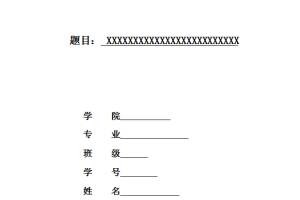互联网正以强大的力量不断融入到社会生活的每个方面,网络用户以几何级数递增,消费特点也随着发生了太多改变。近年间网络营销发展极为迅速,通过网络发展商业活动也渐渐变为商家们完成其营销策略的最主要方式之一。作为经济活动重点的企业也逐渐看清互联网的重要性,陆续搭上了电子商务这辆快车,发展网络营销方式通过提高自身在新的经济发展形势下的竞争力。所以,研究互联网时代的消费特点对更好地帮助企业将指定信息传递给特定人群有利,做到有的放矢,营销精准。
本文利用对网络时代消费的深入研究,对网络时代消费的特点做出了六个总结,即开放性、整合性、隔离性、交互性、技术性、个体性。经过对这六大特点的整体研究,推出了以网络顾客为中心的4C网络营销组合方案,包括内容方案(Content)、竞争力方案(Competitiveness)、传播方案(Communication)、信誉方案(Credit)。网络营销4C组合方案可以给企业进行网络营销提供有用的理论和实践引导。
关键词:网络;消费特点;4C网络营销组合方案
The Internet is a powerful force into every aspect of social life, the network users to increase the geometric series, consumption characteristics have changed too much. In recent years, the rapid development of network marketing, the development of commercial activities through the network has gradually become one of the most important way for businesses to complete their marketing strategy. As the importance of economic activities focus on enterprises also gradually see the Internet, the electronic commerce one after another to catch this train, the development of network marketing by improving their competitiveness under the new situation of economic development. Therefore, the study of the characteristics of the Internet era of consumption to better help companies to specify the information transmitted to a particular group of people, so targeted, precise marketing.
This paper makes an in-depth study of the consumption in the Internet age, and makes a summary of the characteristics of the consumption in the Internet age, that is, open, integrated, isolated, interactive, technical, and individual. Six. After a comprehensive study of the characteristics of the six, launched 4C network marketing solutions to the network customer as the center, including the content of the program (Content), (Competitiveness), competitive scheme (Communication), reputation propagation scheme scheme (Credit). The network marketing 4C combination scheme can provide useful theoretical and practical guidance for enterprise network marketing.
Key words: network; consumption characteristics; 4C network marketing mix program
目录
摘要………………………………………………………………………………………………………………………… I
Abstract…………………………………………………………………………………………………………………… II
一、网络营销相关理论介绍……………………………………………………………………………………. 6
(一)网络营销定义……………………………………………………………………………………….. 6
(二)网络营销的特点……………………………………………………………………………………. 6
(三)网络营销与传统营销的区别………………………………………………………………….. 6
1.沟通方式的不同…………………………………………………………………………………….. 6
2.沟通理念的不同…………………………………………………………………………………….. 7
3.沟通时空限制的不同……………………………………………………………………………… 7
(四)网络营销研究现状………………………………………………………………………………… 7
二、网络时代市场发展宏观状态…………………………………………………………………………….. 8
(一)政策环境………………………………………………………………………………………………. 8
1.国家“十二五”规划持续整体提升信息化水平………………………………………. 8
2.两个机构建立,加快电子商务发展………………………………………………………… 8
3.地方政策法规有利于网络消费规范完善…………………………………………………. 8
(二)经济环境………………………………………………………………………………………………. 9
1.我国居民消费者潜在和实力购买能力均有提高………………………………………. 9
2.政策帮助网络经济投融资发展……………………………………………………………….. 9
(三)社会环境………………………………………………………………………………………………. 9
1.我国消费者信心指数企稳回涨……………………………………………………………….. 9
2.互联网网民使用范围及普及率不断升高……………………………………………….. 10
3.物流行业振兴规划帮助网购市场完善…………………………………………………… 10
(四)技术体系…………………………………………………………………………………………….. 10
1.国家加大互联网基础设施的建设力度…………………………………………………… 10
2.网上银行的整体改善更好的保护了网上支付………………………………………… 11
3.4G引领移动交付业务,第三方交付方式逐渐改善………………………………… 11
三、网络时代消费特征…………………………………………………………………………………………. 12
(一)整合性………………………………………………………………………………………………… 12
1、地域整合性……………………………………………………………………………………….. 12
2、信息方式整合性………………………………………………………………………………… 12
3、产品内容整合性………………………………………………………………………………… 13
(二)开放性………………………………………………………………………………………………… 13
1.信息传递的开放性……………………………………………………………………………….. 13
2.商家的开放性………………………………………………………………………………………. 14
(四)隔离性………………………………………………………………………………………………… 14
1、交易双方的隔离………………………………………………………………………………… 14
2、交付时间的延迟………………………………………………………………………………… 14
3、交易安全问题……………………………………………………………………………………. 14
4、产品售后的隔离………………………………………………………………………………… 15
(五)个体性………………………………………………………………………………………………… 15
1、个人消费体验……………………………………………………………………………………. 15
2、个性化消费特征………………………………………………………………………………… 16
四、基予网络消费特征的营销策略……………………………………………………………………….. 16
(一)内容策略…………………………………………………………………………………………….. 16
1、编辑全面的产品信息…………………………………………………………………………. 16
2、扩大互补或相关性产品范围………………………………………………………………. 17
(二)竞争力策略…………………………………………………………………………………………. 18
1、限时打折或者优惠活动……………………………………………………………………… 18
2、运费见面政策……………………………………………………………………………………. 18
3、团购活动…………………………………………………………………………………………… 18
4、及时关注市场行情…………………………………………………………………………….. 18
(三)传播策略…………………………………………………………………………………………….. 19
1、网络“自媒体”的产生与作用…………………………………………………………… 19
2、“自媒体”下的传播策略……………………………………………………………………. 19
(四)信誉策略(Credit)………………………………………………………………………………….. 21
四、结论………………………………………………………………………………………………………………. 22
致谢……………………………………………………………………………………………………………………… 23
参考文献……………………………………………………………………………………………………………… 24





